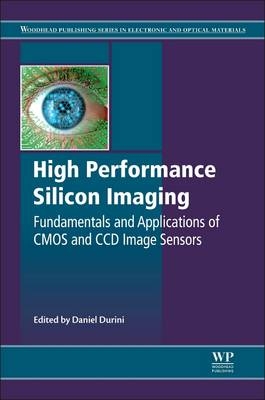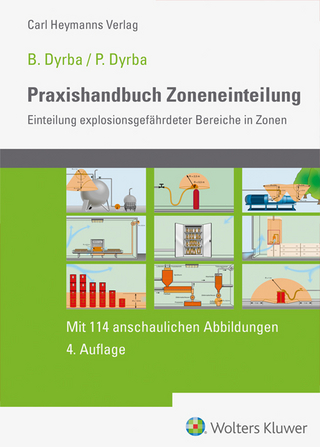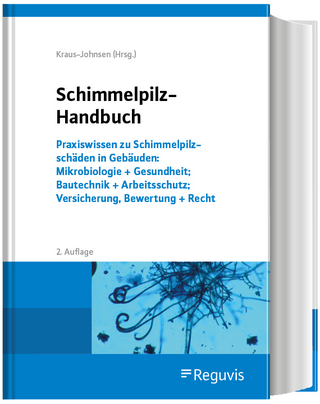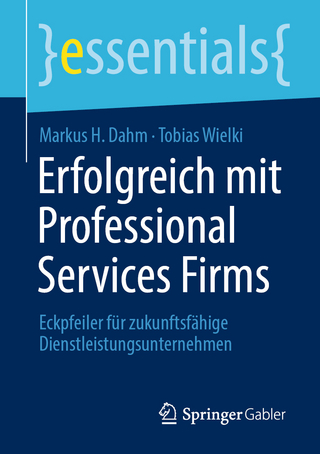
High Performance Silicon Imaging
Woodhead Publishing Ltd (Verlag)
978-0-85709-598-5 (ISBN)
- Titel erscheint in neuer Auflage
- Artikel merken
High Performance Silicon Imaging covers the fundamentals of silicon image sensors, with a focus on existing performance issues and potential solutions. The book considers several applications for the technology as well. Silicon imaging is a fast growing area of the semiconductor industry. Its use in cell phone cameras is already well established, and emerging applications include web, security, automotive, and digital cinema cameras.
Part one begins with a review of the fundamental principles of photosensing and the operational principles of silicon image sensors. It then focuses in on charged coupled device (CCD) image sensors and complementary metal oxide semiconductor (CMOS) image sensors. The performance issues considered include image quality, sensitivity, data transfer rate, system level integration, rate of power consumption, and the potential for 3D imaging. Part two then discusses how CMOS technology can be used in a range of areas, including in mobile devices, image sensors for automotive applications, sensors for several forms of scientific imaging, and sensors for medical applications.
High Performance Silicon Imaging is an excellent resource for both academics and engineers working in the optics, photonics, semiconductor, and electronics industries.
Daniel Durini is currently Director of Research and a full Research Professor in areas of microelectronics and radiation detection at the National Institute of Astrophysics, Optics and Electronics (INAOE) in Puebla, Mexico. He obtained the B.Sc. degree in Electrical-Electronic Engineering from the National Autonomous University of Mexico (UNAM) in 2002, the M.Sc. degree in area of Microelectronics from the National Institute of Astrophysics, Optics and Electronics in Mexico in 2003, and the Ph.D. degree in area of Microelectronics from the University of Duisburg-Essen in Germany in 2009. He was with the Fraunhofer Institute for Microelectronic Circuits and Systems (IMS) in Duisburg, Germany, between 2004 and end of 2013, where he led during the last four years a group dedicated to developing special CMOS process modules for high-performance photodetection devices, pixel structures and imagers. Prior to his current position, he was with the Central Institute of Engineering, Electronics and Analytics, ZEA-2 – Electronic Systems of the research centre Forschungszentrum Jülich in Jülich, Germany, where he headed between 2015 and beginning of 2018 the development of Detector Systems dedicated to scientific applications. He received the Duisburger Sparkasse Award for outstanding Ph.D. thesis in 2009 and two best paper awards. He has authored and co-authored more than 60 technical papers and three book chapters, and holds six patents in the area of CMOS image sensors. He is Member of the IEEE since 2009, and forms part of the National System for Researchers (SNI) in Mexico since 2014.
Contributor contact details
Woodhead Publishing Series in Electronic and Optical Materials
Part I: Fundamentals
1. Fundamental principles of photosensing
Abstract:
1.1 Introduction
1.2 The human vision system
1.3 Photometry and radiometry
1.4 History of photosensing
1.5 Early developments in photodetector technology
1.6 References
2. Operational principles of silicon image sensors
Abstract:
2.1 Introduction
2.2 Silicon phototransduction
2.3 Principles of charged coupled device (CCD) and complementary metal-oxide-semiconductor (CMOS) photosensing technologies
2.4 Metal-oxide-semiconductor-capacitor (MOS-C) structure-based photodetectors
2.5 p-n junction-based photodetectors
2.6 Noise considerations in pixel structures
2.7 High-performance pixel structures
2.8 Miniaturization and other development strategies followed in image sensor technologies
2.9 Hybrid and 3D detector technologies
2.10 Conclusion
2.11 References
3. Charge coupled device (CCD) image sensors
Abstract:
3.1 Introduction
3.2 Charge coupled device (CCD) design, architecture and operation
3.3 Illumination modes
3.4 Imaging parameters and their characterization
3.5 Conclusion and future trends
3.6 References
4. Backside illuminated (BSI) complementary metal-oxide-semiconductor (CMOS) image sensors
Abstract:
4.1 Introduction
4.2 Challenges facing a scaled-down frontside illuminated (FSI) sensor
4.3 Basics of backside illuminated (BSI) sensor process integration
4.4 Interface solutions to BSI sensors
4.5 Conclusion
4.6 References
5. Circuits for high performance complementary metal-oxide-semiconductor (CMOS) image sensors
Abstract:
5.1 Introduction
5.2 High resolution image sensors
5.3 Low noise complementary metal-oxide-semiconductor (CMOS) image sensors
5.4 High speed image sensors
5.5 Low power image sensors
5.6 Wide dynamic range sensors
5.7 Other high performance designs
5.8 Conclusion
5.9 References
6. Smart cameras on a chip: using complementary metal-oxide-semiconductor (CMOS) image sensors to create smart vision chips
Abstract:
6.1 Introduction
6.2 The concept of a smart camera on a chip
6.3 The development of vision chip technology
6.4 From special-purpose chips to smart computational chips
6.5 From video rate applications to high-speed image processing chips
6.6 Future trends
6.7 Conclusion
6.8 References
Part II: Applications
7. Complementary metal-oxide-semiconductor (CMOS) image sensors for mobile devices
Abstract:
7.1 Introduction
7.2 Core image/video capture technology requirements and advances in mobile applications
7.3 Emerging complementary metal-oxide-semiconductor (CMOS) ‘sensor-embedded’ technologies
7.4 Mobile image sensor architecture and product considerations
7.5 Future trends
7.6 Conclusion
7.7 References
8. Complementary metal-oxide-semiconductor (CMOS) image sensors for automotive applications
Abstract:
8.1 Automotive applications
8.2 Vision systems
8.3 Sensing systems
8.4 Requirements for automotive image sensors
8.5 Future trends
8.6 References
9. Complementary metal-oxide-semiconductor (CMOS) image sensors for use in space
Abstract:
9.1 Introduction
9.2 General requirements for use of complementary metal-oxide-semiconductor (CMOS) sensors in space
9.3 Comparison of CMOS sensors and charge coupled devices (CCDs) for space applications
9.4 CMOS sensors for space applications
9.5 References
10. Complementary metal-oxide-semiconductor (CMOS) sensors for high-performance scientific imaging
Abstract:
10.1 Introduction
10.2 Detection in silicon
10.3 Complementary metal-oxide-semiconductor (CMOS) sensors for the detection of charged particles
10.4 CMOS sensors for X-ray detection
10.5 Future trends
10.6 Sources of further information and advice
10.7 References
11. Complementary metal-oxide-semiconductor (CMOS) sensors for fluorescence lifetime imaging (FLIM)
Abstract:
11.1 Introduction
11.2 Fluorescence lifetime imaging (FLIM)
11.3 Complementary metal-oxide-semiconductor (CMOS) detectors and pixels
11.4 FLIM system-on-chip
11.5 Future trends
11.6 Sources of further information and advice
11.7 References
12. Complementary metal-oxide-semiconductor (CMOS) X-ray sensors
Abstract:
12.1 Introduction
12.2 Intra-oral and extra-oral dental X-ray imaging
12.3 Medical radiography, fluoroscopy and mammography
12.4 CMOS image sensor (CIS)-based flat panel display (FPD) technology
12.5 Pixel design considerations for CMOS-based FPDs
12.6 Key parameters for X-ray sensors
12.7 X-ray sensors: types and requirements
12.8 Direct X-ray sensors
12.9 Conclusion and future trends
12.10 References
13. Complementary metal-oxide-semiconductor (CMOS) and charge coupled device (CCD) image sensors in high-definition TV imaging
Abstract:
13.1 Introduction
13.2 Broadcast camera performance
13.3 Modulation transfer function (MTF), aliasing and resolution
13.4 Aliasing and optical low pass filtering
13.5 Opto-electrical matching and other parameters
13.6 Standards for describing the performance of broadcast cameras
13.7 Charge coupled device (CCD) and complementary metal-oxide-semiconductor (CMOS) image sensors used in broadcast cameras
13.8 Signal-to-noise ratio (SNR)
13.9 Bit size, pixel count and other issues
13.10 Three-dimensional and ultra high-defi nition (UHD) television
13.11 Conclusion
13.12 Sources of further information and advice
13.13 References
14. High-performance silicon imagers and their applications in astrophysics, medicine and other fields
Abstract:
14.1 Introduction
14.2 Solid-state imaging detectors: principles of operation
14.3 Scientific imaging detectors
14.4 Readout structures
14.5 Photon counting detectors
14.7 Planetary and astronomy applications
14.8 Commercial applications of high-performance imaging detectors
14.9 Brief note on biological and medical applications
14.10 References and further reading
Index
| Reihe/Serie | Woodhead Publishing Series in Electronic and Optical Materials |
|---|---|
| Verlagsort | Cambridge |
| Sprache | englisch |
| Maße | 156 x 234 mm |
| Gewicht | 850 g |
| Themenwelt | Technik |
| ISBN-10 | 0-85709-598-6 / 0857095986 |
| ISBN-13 | 978-0-85709-598-5 / 9780857095985 |
| Zustand | Neuware |
| Haben Sie eine Frage zum Produkt? |
aus dem Bereich


